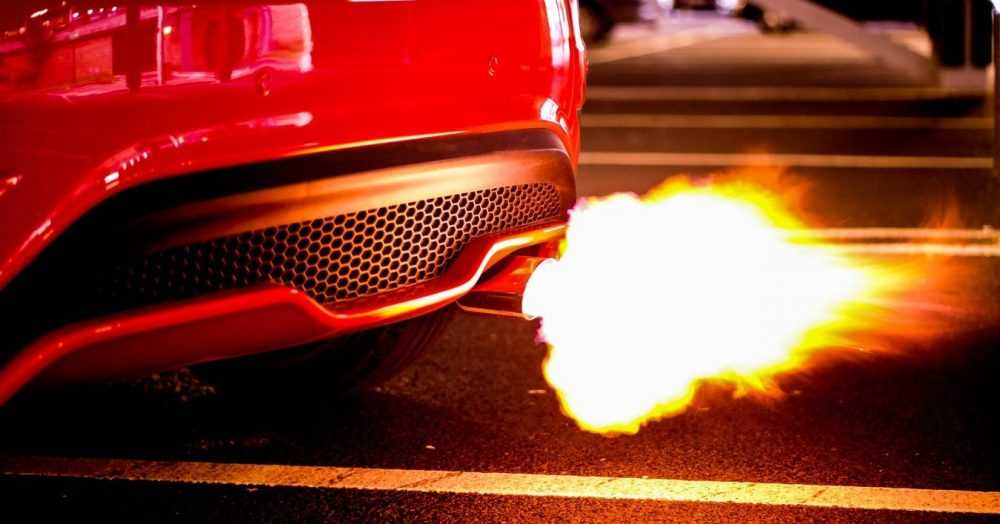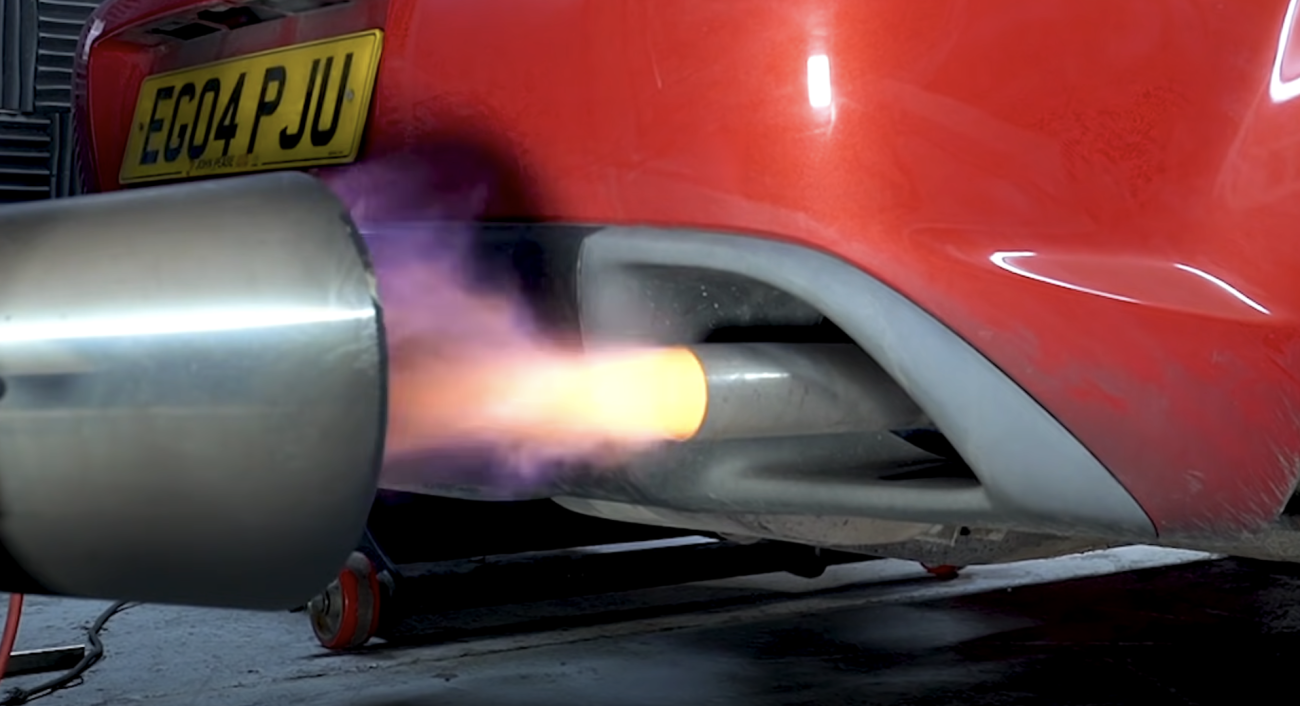Pop! Bang! ASBO! Sure, it might be a bit on the juvenile side, but there’s an undeniable allure to witnessing flames shoot out from a car’s exhaust.
Granted, it’s not the best thing for the engine or the vehicle’s bodywork, and law enforcement probably won’t appreciate the spectacle. Plus, there’s always the risk of accidentally turning your car into a bonfire. Yet, there’s just something about FIRE!
The primary reason flames dance from the pipes is the presence of unburnt fuel in the exhaust system that has ignited.

This phenomenon, while less common nowadays due to efficiency improvements in high-performance engines and advancements in particulate filters complying with environmental regulations, can still captivate an audience.
These filters trap unburnt fuel particles, preventing them from igniting in a dramatic and crowd-pleasing display.
The go-to method for unleashing your inner flamethrower is often to bid farewell to your catalytic converter. This device, designed to clean up emissions, stands in the way of your fiery ambitions. Once removed, installing a straight-through exhaust becomes an option, albeit one that may raise concerns during the MOT inspection.
To intensify the fire-spewing potential, you’ll need to ensure a generous supply of fuel enters the exhaust. A simple technique involves accelerating vigorously with a wide-open throttle, then abruptly lifting your foot off the accelerator to swiftly close the throttle.
The excess fuel and air, now unnecessary for propulsion, find their way into the exhaust, where they may ignite on the hot pipes.
Achieving this effect often requires running a richer fuel mix, with more fuel dumped into the exhaust, resulting in a more impressive display. For turbo-equipped cars, an atmospheric blow-off valve can enhance the experience.
For those seeking a shortcut to consistent flame-throwing, a rotary-powered car is the answer. Their natural tendency to run richer means that a straight-piped rotary engine can produce flames without any additional tinkering.
Now, for the most ingenious yet somewhat makeshift method of ensuring fiery exhaust displays, consider the old-school approach of fitting a spark plug about six inches from the exhaust’s end. Wired to a cabin button, this setup allows the initiation of a spark to ignite waste fuel.
Alternatively, if you’re familiar with engine management systems, you can instruct the car not to cut fuel at high revs with a closed throttle. This adjustment keeps fuel pumping into the engine, and when unignited, it escapes into the exhaust, resulting in flames.
Antilag and two-step systems offer more sophisticated means of inducing fire. Antilag systems combust fuel after the engine and before the turbo, maintaining turbo spin during low exhaust gas flow. This not only reduces turbo lag but also introduces extra unburnt fuel into the exhaust.
Two-step systems featuring dual rev limiters allow for controlled fuel delivery to the combustion chamber while keeping it from always igniting at lower revs. The unburnt fuel finds its way into the exhaust, creating the desired fiery spectacle.

